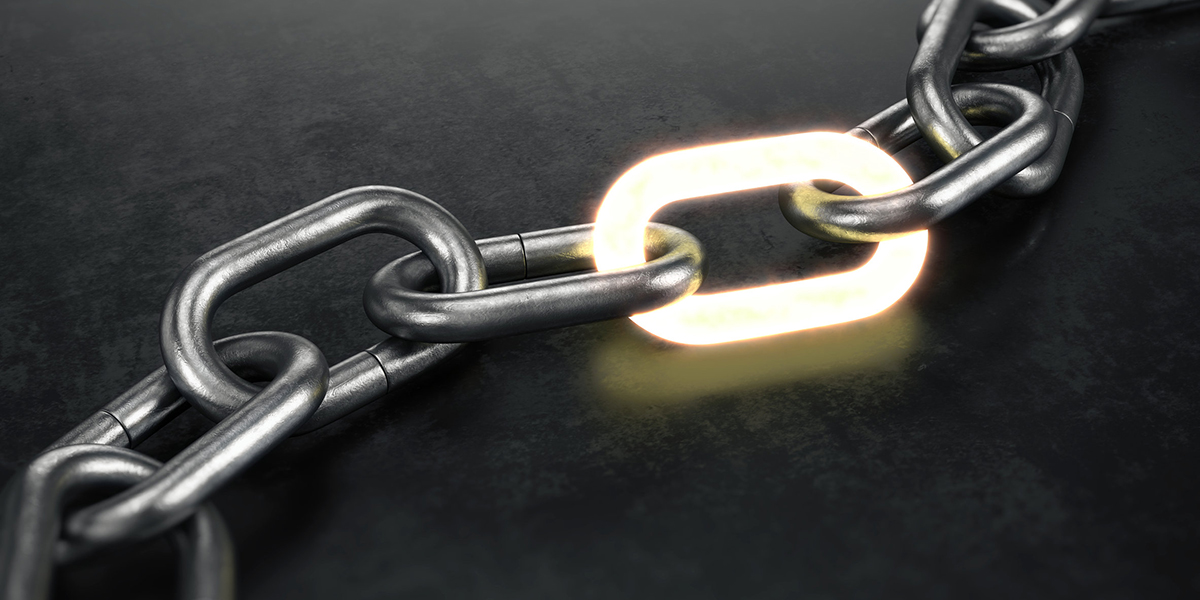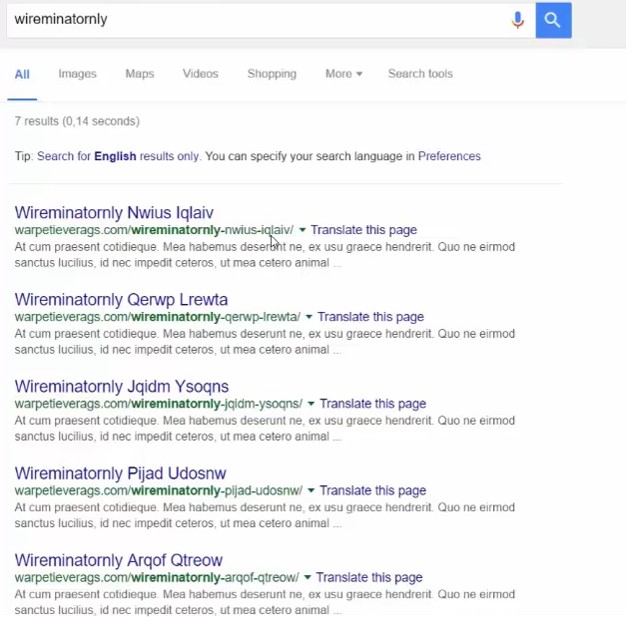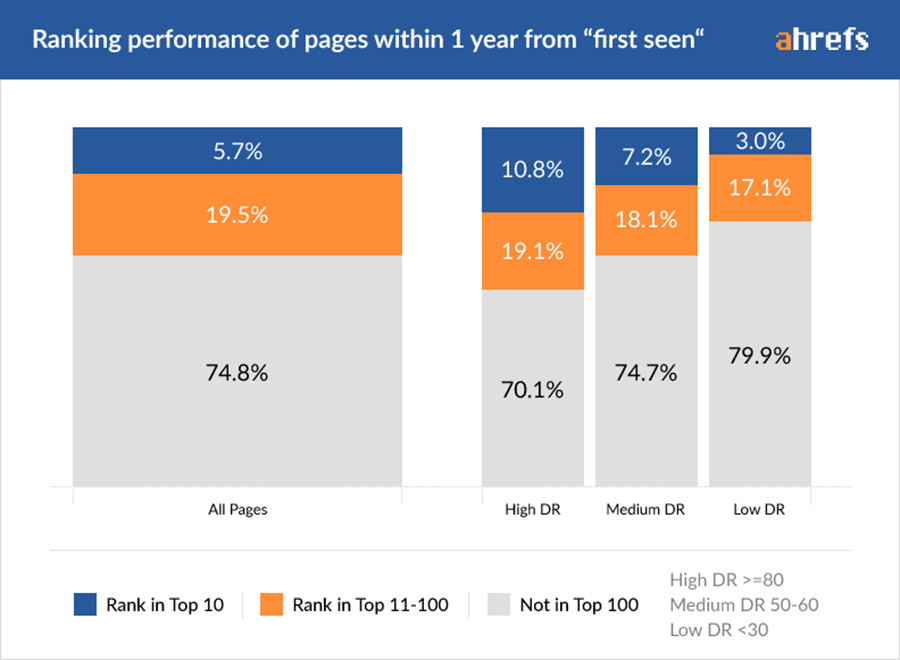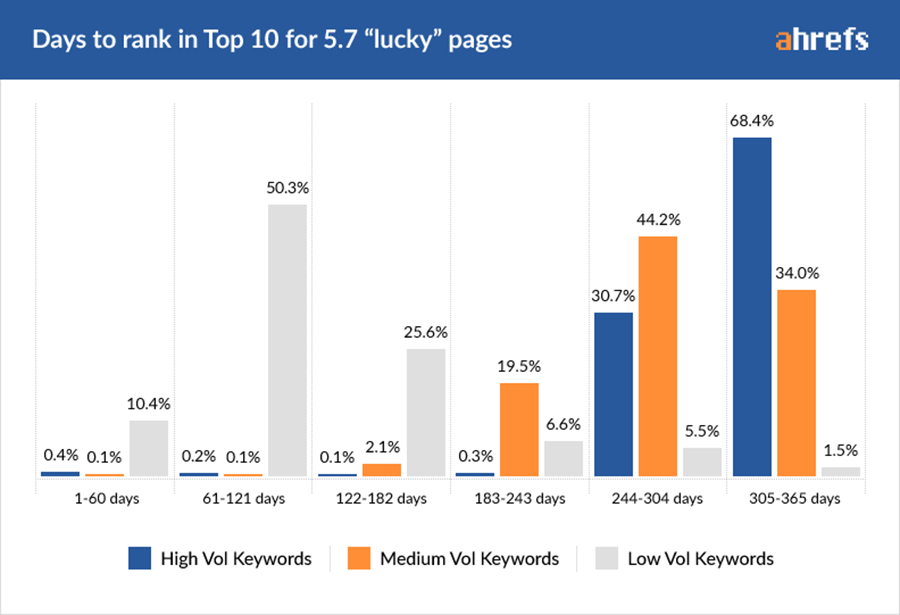
Backlinks are extremely important if you want more search traffic to your website.
In fact, many professional SEOs would say that backlinks have always been Google’s most important ranking factor. Simply put, your website will never rank for any competitive keywords without backlinks.
But building backlinks is an intensive process. Doing so costs time and money, which naturally leaves many website owners wondering…
How long will it take for my investment in backlinks to pay off?
There is no definitive answer, but we’re about to tackle that very difficult question. By the end of this article, you will have at least a general idea of how long it takes for backlinks to impact rankings.
Table of Contents:
There are a ton of variables that influence an individual backlink’s effectiveness and time to impact. Since every website is different, there can be no one-size-fits-all answer.
If you want to learn about the most important variables, keep reading. Otherwise, you can skip straight to the “answer” by clicking here.
Of the countless variables that impact a backlink’s effectiveness, these seven are most consequential:
Domain Authority (DA) is a search engine ranking score developed by Moz that predicts how well a website will rank on search engine result pages (SERPs). A Domain Authority score ranges from one to 100, with higher scores corresponding to a greater ability to rank.
Domain Authority is calculated by evaluating multiple factors, including linking root domains and the number of total links, into a single DA score. This score can then be used when comparing websites or tracking the “ranking strength” of a website over time.
That’s the definition of Domain Authority straight from Moz.
There are two key things to note about this metric regarding backlinks:
You can check the DA score of any website for free with this tool.
While some links will help your site rank better, others can actually do more harm than good.
For simplicity, we can group all types of links into three baskets:
Follow links exist within the HTML of a website and are read by Google’s search bots. Here’s an example of what a follow link looks like in HTML:
<a href=”https://www.yourwebsite.com”>link text</a>
When professional SEOs do link building campaigns, acquiring follow links is the goal.
Links from sites like Twitter or Quora are always nofollow, but websites can add a small snippet of HTML code to any link to make it nofollow. Here’s an example of a nofollow link in HTML:
<a href=”https://www.yourwebsite.com” rel=”nofollow”>link text</a>
Because nofollow links don’t directly influence rankings, acquiring them should not be the goal of a link building campaign. That said, they are still great to have because they can drive traffic to your website and increase brand exposure (which may even lead to a follow link or two).
These are links acquired through link schemes or any other unnatural method. You can buy dozens of shady links on sites like Fiverr for a few bucks, but such links will almost certainly hurt your site’s rankings. Google is smart, and its algorithm will recognize that the links are low-quality and unnatural, which may lead to a penalty.
Avoid shady links at all costs.
Acquiring backlinks is generally more important for smaller, newer sites than it is for older sites. This is because older sites have spent years building trust and authority, and they’ve likely acquired oodles of backlinks along the way, essentially giving them a head start.
Because of their head start, larger sites can oftentimes publish a new page and rank for their target keyword (and/or relevant longtail keywords) with few or no backlinks pointing to the page. This would be almost impossible for a smaller site to accomplish (unless the keyword was very noncompetitive).
Link velocity is essentially the rate at which a website acquires links. The higher your link velocity, the faster you will see results (so long as the links are acquired organically). A very high link velocity is often indicative of viral content — which is great for rankings.
It’s important that you link velocity looks natural and not consistent. This excerpt from our guide to writing blog content explains why:
You do not want your site to have a consistent link velocity because Google could see it as unnatural link building. Think about it: would an authoritative site like the New York Times or Forbes receive a very similar number of links every day/week/month? Absolutely not.
This is why a consistent link velocity can reduce the effectiveness of your links, or even lead to a penalty. Remember, the search engines hate when people try to game them.
For example, building 10 links per month, every month, would be less effective than building 15 links one month and 5 links the next. When we build links for our RankFire clients, we prioritize keeping a sharp eye on their link velocity to ensure maximal results.
Keyword Difficulty (KD) is a metric from Ahrefs that rates the competitiveness of a keyword. More specifically:
Keyword Difficulty estimates how hard it will be to rank in the top 10 organic search results for a given keyword…
We calculate the Ahrefs KD score by taking a weighted average of the number of linking domains to the current top-10 ranking pages and then plotting the result on a logarithmic scale from 0 to 100.
The higher the KD, the more backlinks you will need to rank on the front page of Google. Keep in mind that KD is rated on a non-linear scale (meaning the jump from 30 to 40 is much tougher than 10 to 20).
Links from sites that are relevant to your industry will help you more than links from sites outside of your industry. To quote an amazing Quora answer:
For backlinks to be most effective they must be relevant to your [industry]. If you are able to find a guest posting opportunity on a site related to your industry that is a huge opportunity to put your brand in the faces of people who are going to be interested in what you have to say. Google is smart and recognizes this. In the long run, links from sites relevant to your industry will boost your overall authority. The more links you can build on sites relevant to your [industry] the quicker you will see backlinks coming into effect.
That’s not to say links from outside of your industry are worthless. Such links will generally still help your rankings, especially if they come from authoritative sites.
Anchor text refers to the clickable words in a link. For example, this text right here is anchor text.
Here’s an explanation of how the anchor text of a backlink impacts rankings (from our guide to anchor text):
Google’s algorithm crawls anchor text to better understand the topic of yourwow th page, as well as the keywords for which it should rank.
For example, suppose you link to a page with “surfing in San Diego” as the anchor text. That would indicate to Google that the page is about surfing in San Diego.
Anchor text used to have a huge impact on rankings, to the point that it was very easy to manipulate. Google has wised up since. These days, manipulated anchor text can easily get you a penalty, whereas perfectly-planned and executed anchor text will only have small positive impact.
To get a small potential boost to your rankings and to avoid penalties, keep your anchor text profile looking natural. Learn how to do that in our guide to anchor text.
As previously mentioned, there is no way to know exactly how long it will take for a backlink to impact a page’s rankings.
Luckily, there are many available studies and experiments on this topic that make it easier to estimate.
The details: Patrick from SERPChampion ran an experiment to see just how quickly one backlink can impact rankings. He isolated the variables in a very interesting way:
Step 1: He created five similar pages with the same meta content, all based around a fake keyword (“wireminatornly”) that didn’t appear in the Google database. As a result, searching for the fake keyword showed only the five pages he created:

Step 2: He pointed one high-quality backlink at the page in the third position. The pages were unchanged in every other way. Step 3: The link was entered into the backlink indexer tool to help the link get indexed by Google faster. Step 4: He checked back every day to see when the target page moved up in the rankings.
The results: The target page moved up to the first position in three days.
Conclusion: A backlink can take as little as three days to impact rankings for a very non-competitive keyword.
The details: “I picked out 76 links pointing to pages which are all similar to each other in content, and we didn’t change that content (significantly) for 6 months. I focused on rankings for target keywords with a 25–35% Keyword Difficulty Rating. I looked at two versions of their target keywords, so I could have a bit more data.”
The results: It took an average of 10 weeks to see 1 rank jump. Interestingly, the link has a small amount of impact at first, but that impact seems to increase as time passes (pictured below).

The study also found that the lower the rank, the more effect a link has:

As you can see, pages that were already ranking on Google’s first page took 10-22 weeks to see a small improvement (1-2 ranks). Compare that to pages that were on Google’s second page and beyond, which saw big improvements (2-11 ranks) in a shorter time span (8-18 weeks).
Finally, the Moz study found that links from sites with a high DA moved the needle faster than sites with a low DA:

Conclusion: It will generally take 8-10 weeks to see a small boost in rankings from a single backlink for a keyword with medium competition. The boost can be bigger if the page was ranking on page two or beyond, or if the link came from a site with a high DA score.
The details: “…we randomly selected 2 million pages that were first seen by Ahrefs crawler a year ago. We then tracked the position history of each page for any keyword it’s ranked for.”
So, this study didn’t attempt to isolate backlinks specifically, but the results are still helpful to answering the question posed in our title today.
The results: Only 5.7% of all studied pages ranked in the top 10 within 1 year for at least 1 keyword.

The Ahrefs team then took a closer look at these 5.7% of “lucky” pages to see how quickly they got from nowhere to the top 10, broken down by keyword volume:

As you can see, ranking for low-volume keywords didn’t take long at all. Medium and high volume keywords, however, took nearly a year to reach the top 10. (Remember that this data is only for the 5.7% of “lucky” pages that ranked in the top 10 within a year — most pages won’t perform this well.)
Conclusion: It can take as little as a few days to rank for a low volume keyword with a new page, but ranking for medium and high volume keywords will take quite a bit longer (6+ months).
While there is no definitive answer to the question posed in our title, we can still make a few solid statements about backlink impact time:
Building backlinks is a time and resource-intensive task, which is why many business owners bring on outside help to run their backlink building campaigns.
Want backlinks built for you so you can stay focused on running your business? Schedule a free SEO consultation today.